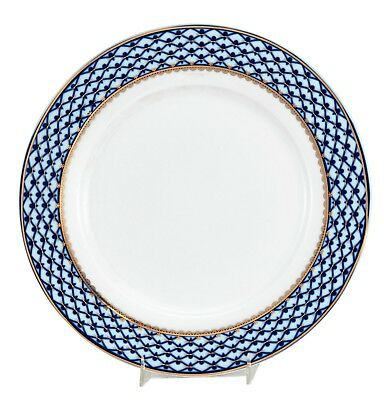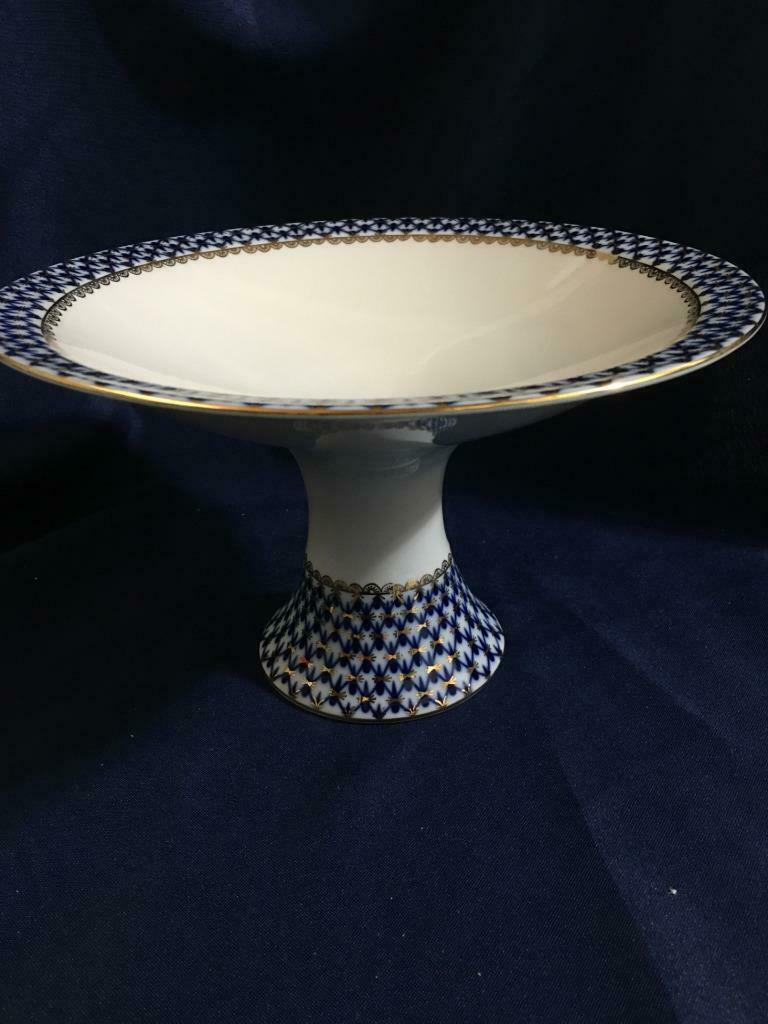-40%
Set of 6 Russian 10.5" Cobalt Blue Net Dinner Plates - 24K Gold Dining Porcelain
$ 68.63
- Description
- Size Guide
Description
Premium Bone China PorcelainSet of 6 x 10.5" dinner plates
Russian Cobalt Blue Net pattern
24K gold plated accents
Famous Lomonosov (reproduction) Inspired design
1:1 vintage reproduction
Hand Wash Only recommended
Founded in 1744, the first porcelain factory in Russia was created by order of Empress Elizabeth, daughter of Peter the Great, to "serve native trade and native art." The factory produced wares exclusively for the ruling Romanov family and the Russian Imperial court.
Attempts to reveal the secret of hard paste true porcelain-making had expanded to Russia since the visit of Peter the Great to Saxony in 1718. Dmitry Ivanovich Vinogradov, a talented mining engineer who studied metallurgy at Freiberg, Saxony, invented the formula for the Russian porcelain works established in 1744. This is where Dmitry Vinogradov (1720-1758), discovered the secret of making "white gold."
In 1925, on the occasion of the 200th jubilee of the Russian Academy of Science, the factory was given the name of the academy's founder, Mikhail Lomonosov. It became known as the Leningrad Lomonosov Porcelain Factory which produced a range of wares, including collectible animal figurines and dinner sets.
Bone china is the strongest of the porcelain or china ceramics, having very high mechanical strength and chip resistance, and is known for its high levels of whiteness and translucency. Its high strength allows it to be produced in thinner cross-sections than other types of porcelain. Bone china is a type of soft-paste porcelain that is composed of bone ash, feldspathic material, and kaolin. The first commercially widespread bone china was developed by the English potter Josiah Spode in the early 1790s. It has been defined as ware with a translucent body containing a minimum of 30% of phosphate derived from animal bone and calculated calcium phosphate.











